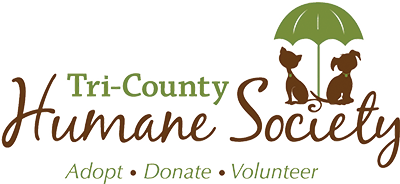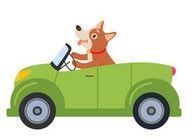Jumping problems are most often found with adolescents (dogs 6 to 18 months old). Toy, terrier and sporting breeds such as Italian Greyhounds, Poodles, Jack Russells, and Labrador Retrievers are notorious jumpers. Dogs jump up because they want to get closer to someone’s face.
For most, peak jumping behavior is observed around mealtime, when you come home, walk time, out on the walk itself and when friends/relatives come over to visit. This problem can be solved by training. The proper amount of exercise for your dog’s breed type is of great help, too! Lack of exercise results in out-of-control whirlwinds who lack the ability to focus.
What to do:
When you see your dog rev up to leap, say “No, off!” and turn away from the dog. Removing your attention (a reward to the dog) is a gentle, effective way to correct the dog. As soon as he has settled either with four feet on the floor or in a sit/down-stay, turn back around, drop to your knees and quietly praise the dog.
Give the jumping behavior a name so you can turn it on and off (“leapin’ lizards,” “paws up,” or “feet up”). Teach your dog how to jump on command, then add “no” as in “no paws up” to let the dog know when you don’t want him to jump.
Give the dog something else to do. Obedience training is a strong plus when trying to get a jumping problem under control. A dog holding a sit or down-stay is not a jumping dog. When attempting the sit down or down-stay, avoid pushing, shoving, flapping your arms or other fast, excitable movements. Use a lure-reward method rather than physically manipulating the dog. Avoid raising your vocal tone or whining. All extra movements and excited vocalization will incite the dog.
To aid the dog in holding his sit or down when visitors arrive, put him on a leash before opening the door.
For an unfocused bouncing maniac, give him just enough leash to do a sit or down-stay and step on the rest. When the dog attempts to move, he will correct himself. (This may not work for a 100-pound person with a 200-pound dog, but it works well for most handlers.)
Be consistent. Never let the dog jump up without being directed to do so. A dog cannot distinguish between dirty, old blue jeans and a designer suit. He cannot tell which days is it OK to jump on you by what you are wearing or what the weather is like.
Be consistent with strangers, too. Don’t let someone confuse your dog by stopping you in mid-correction by saying, “It’s OK, I just loooooove dogs” while stroking him and rewarding him for his misbehavior. There is nothing wrong with not allowing people to pet your dog unless he is on a stay command. Guests to your home are no exception. Warn them beforehand (“I’m training my dog not to jump up unless commanded. I could really use your help. Please don’t pet him or even acknowledge him unless he’s holding his stay.”)
For the slow learner, jumping setups are in order. On a weekend or vacation day, arrange for a friend, neighbor or relative to ring your doorbells every 10 to 15 minutes for a couple of hours. Each time, put your dog on a leash, command him to down or sit-stay and open the door and greet your visitor. Sometimes giving the dog a distinct place such as a small foyer rug helps him to focus on his job (go to your place and lie down). Your visitor can give your pup a treat or a tickle if he is behaving, but should ignore him if he is not. Once the dog is under control, the visitor leaves, only to return again in another 10 to 15 minutes. This goes on until Rover understands his job is to stay put until he is told to do otherwise.
What not to do:
Remember that your dog is your friend and companion. There is no need to knee him in the chest, hit him on the head, squeeze his front paws or step on his back feet. By teaching him the acceptable behavior and rewarding him for carrying it out, you become the fair, humane leader every dog needs.
Source: Jacque Lynn Schultz, CPDT









